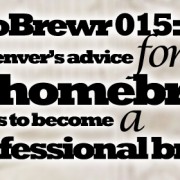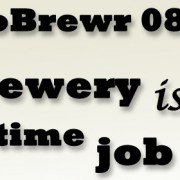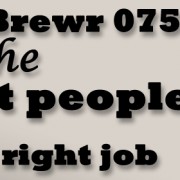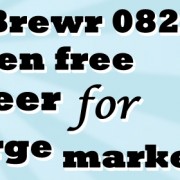MicroBrewr 072: Batch 4,000 and brewery law reform in Minnesota
Podcast: Play in new window | Download | Embed
Subscribe: RSS
Dave Hoops has been brewing for decades. He brought what he learned in California to Minnesota and helped change the brewery laws there. Now his West Coast style beers have been working well for Fitger’s Brewhouse Brewery & Grille, in Duluth Minnesota.
Minnesota does not allow breweries to self-distribute to outside accounts. So Fitger’s has “tied houses,” restaurant/bars that are “tied” to their brewery. That is, their production brewery makes beer for the restaurants that they also own.
If they wanted to package beer for outside distribution, state law would require them to sell the restaurants and just be a package brewery.
To make matters trickier, each brewery under this scenario must have a restaurant (a “production brewpub”), which can make no more than 3,500 BBL per year. So if they were already maxed out at 3,500 BBL per year and they wanted to add another restaurant, the new one would have to be another production brewpub with the limits on annual capacity.
“The only reason that these laws haven’t been challenged,” says Dave, “is because nobody has gotten to this level yet. I’m sure they’ll change it when it happens.”
It’s peculiar because Duluth is right on the border with Wisconsin, which as less stringent laws. So they move their company just 5 miles to the south, they would be allowed to sell their beer to a wider audience.
Still, Dave says the Minnesota brewery market is expanding rapidly. The state recently passed a law that allows productions breweries to have a tap to serve food and their own beer.
Dave was on the board of the state brewers guild and, like Jeff Mease from Bloomington Brewing Co., he helped change laws to make it easier for breweries—like the ability to sell growlers.
“I’m a veteran now, I’m a little more patient,” says Dave. “It’s in [the state’s] best interest to help us sell more beer. So eventually they come around.”
Dave’s advice for reforming brewery laws in your state:
- Visit your state capital and find the legislators who are sympathetic to your cause.
- Find enough legislators for a caucus.
- Be persistent, be positive, and talk to a lot of people.
- Research to show the stats and facts of how breweries can help the economy and the community.
Brewery specs:
Kettle size: 10 BBL.
Size and quantity of fermentation tanks: 4, 10-BBL fermenters; 12, 15-BBL fermenters.
Size and quantity of bright tanks: 20 tanks, most 15-BBL bright tanks.
Annual brewing capacity/last year’s production: Annual capacity is 3,200 BBLs. Last year’s production was 3,000 BBL.
Square footage: 3,600 sq. ft. over two floors.
Years in operation: 20 years (opened 1995).
“I feel really lucky to be a part of this artisan trade that’s been around for centuries.” [Tweet This]
Listener question:
From Lisa Boban: Can you make something other than beer?
Book recommendation:
- New Brewing Lager Beer: The Most Comprehensive Book for Home and Microbrewers by Gregory J. Noonan.
Check out the entire list of recommended books, click here.
An upcoming beer style:
Session IPA
Other resources:
- MicroBrewr 038: Learn the classics and stay true to your genre, MicroBrewr, December 2, 2014.
- MicroBrewr 070: Brewery law reform and scaling up in Indiana, MicroBrewr, June 23, 2015.
- Surly Brewing Co., Brooklyn Center, Minnesota.
- Surly unveils the taproom that made all the others possible, Jess Flemming, St. Paul Pioneer Press, December 18, 2014.
- Pyramid Breweries, Berkeley Alehouse, Berkeley, California.
- What’s Wrong with this Picture?, Anchor Brewing Blog, Anchor Brewing, April 18, 2014.
You can reach Dave Hoops and Fitgers Brewhouse Brewery & Grille at:
Dave’s social media:
Sponsors:
“Fast, reliable, affordable, web hosting.”
Support MicroBrewr
Help keep MicroBrewr on the air. CLICK HERE for ways you can help.















Leave a Reply
Want to join the discussion?Feel free to contribute!